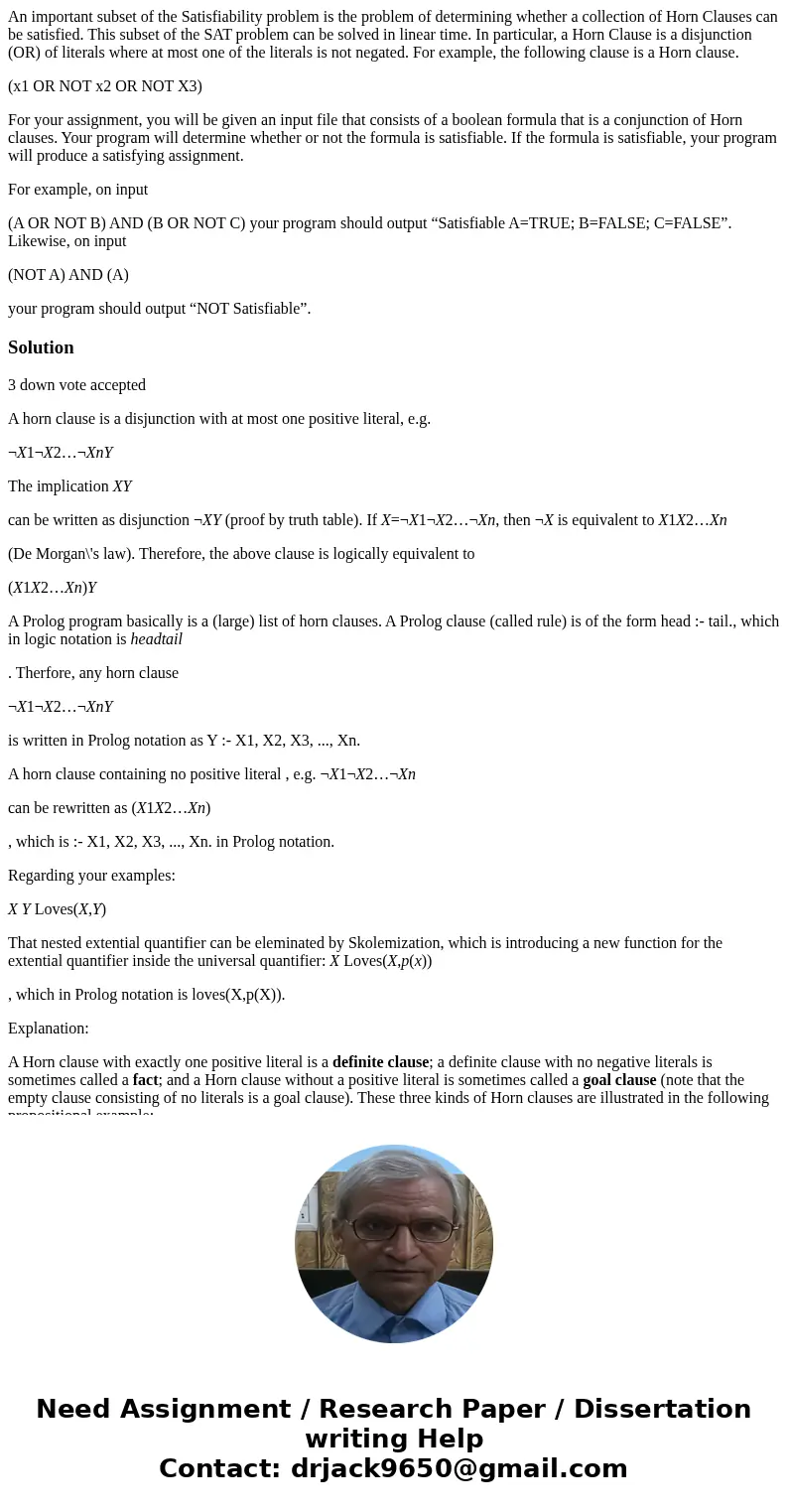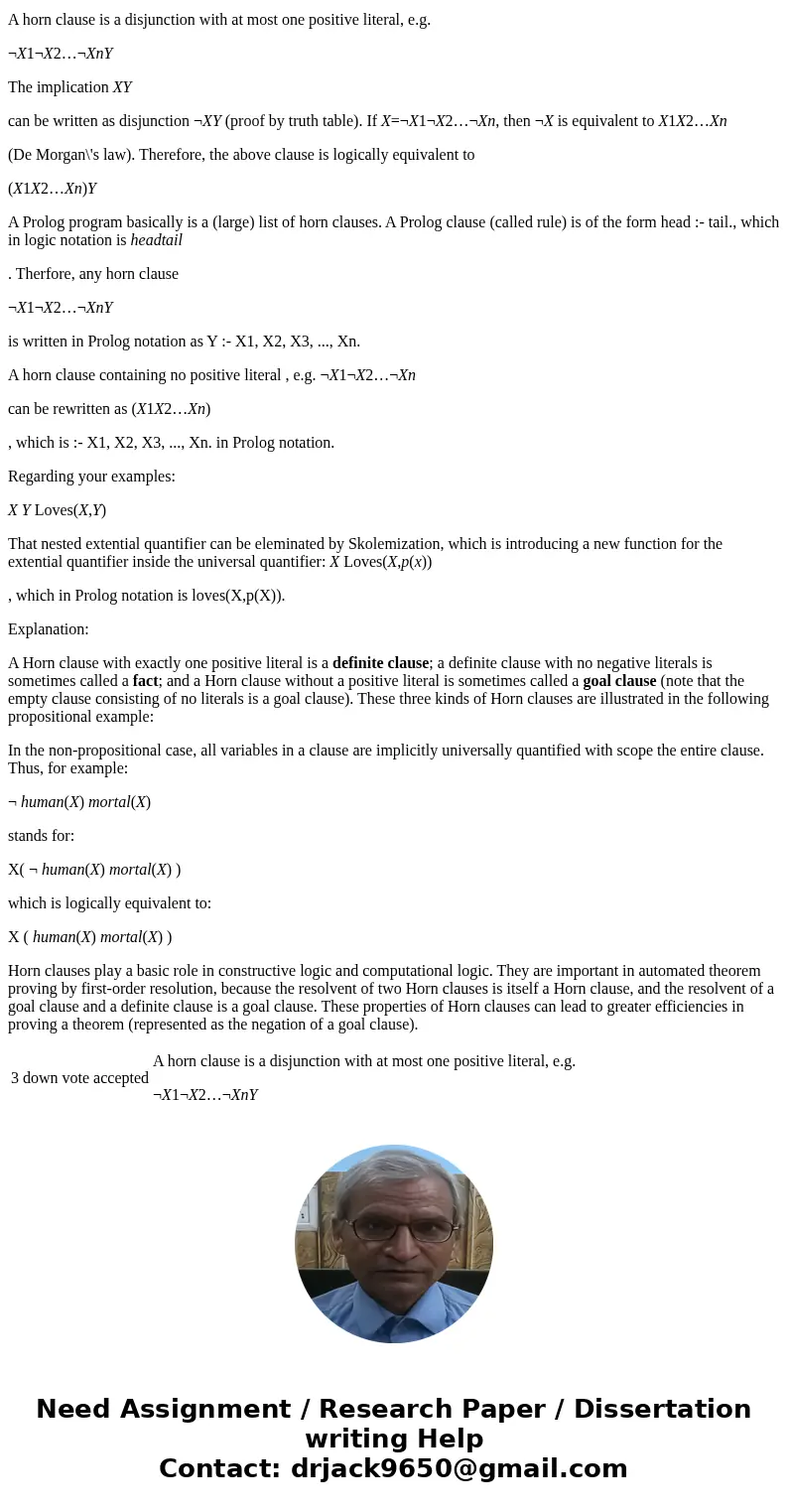An important subset of the Satisfiability problem is the pro
An important subset of the Satisfiability problem is the problem of determining whether a collection of Horn Clauses can be satisfied. This subset of the SAT problem can be solved in linear time. In particular, a Horn Clause is a disjunction (OR) of literals where at most one of the literals is not negated. For example, the following clause is a Horn clause.
(x1 OR NOT x2 OR NOT X3)
For your assignment, you will be given an input file that consists of a boolean formula that is a conjunction of Horn clauses. Your program will determine whether or not the formula is satisfiable. If the formula is satisfiable, your program will produce a satisfying assignment.
For example, on input
(A OR NOT B) AND (B OR NOT C) your program should output “Satisfiable A=TRUE; B=FALSE; C=FALSE”. Likewise, on input
(NOT A) AND (A)
your program should output “NOT Satisfiable”.
Solution
3 down vote accepted
A horn clause is a disjunction with at most one positive literal, e.g.
¬X1¬X2…¬XnY
The implication XY
can be written as disjunction ¬XY (proof by truth table). If X=¬X1¬X2…¬Xn, then ¬X is equivalent to X1X2…Xn
(De Morgan\'s law). Therefore, the above clause is logically equivalent to
(X1X2…Xn)Y
A Prolog program basically is a (large) list of horn clauses. A Prolog clause (called rule) is of the form head :- tail., which in logic notation is headtail
. Therfore, any horn clause
¬X1¬X2…¬XnY
is written in Prolog notation as Y :- X1, X2, X3, ..., Xn.
A horn clause containing no positive literal , e.g. ¬X1¬X2…¬Xn
can be rewritten as (X1X2…Xn)
, which is :- X1, X2, X3, ..., Xn. in Prolog notation.
Regarding your examples:
X Y Loves(X,Y)
That nested extential quantifier can be eleminated by Skolemization, which is introducing a new function for the extential quantifier inside the universal quantifier: X Loves(X,p(x))
, which in Prolog notation is loves(X,p(X)).
Explanation:
A Horn clause with exactly one positive literal is a definite clause; a definite clause with no negative literals is sometimes called a fact; and a Horn clause without a positive literal is sometimes called a goal clause (note that the empty clause consisting of no literals is a goal clause). These three kinds of Horn clauses are illustrated in the following propositional example:
In the non-propositional case, all variables in a clause are implicitly universally quantified with scope the entire clause. Thus, for example:
¬ human(X) mortal(X)
stands for:
X( ¬ human(X) mortal(X) )
which is logically equivalent to:
X ( human(X) mortal(X) )
Horn clauses play a basic role in constructive logic and computational logic. They are important in automated theorem proving by first-order resolution, because the resolvent of two Horn clauses is itself a Horn clause, and the resolvent of a goal clause and a definite clause is a goal clause. These properties of Horn clauses can lead to greater efficiencies in proving a theorem (represented as the negation of a goal clause).
| 3 down vote accepted | A horn clause is a disjunction with at most one positive literal, e.g. ¬X1¬X2…¬XnY |


 Homework Sourse
Homework Sourse